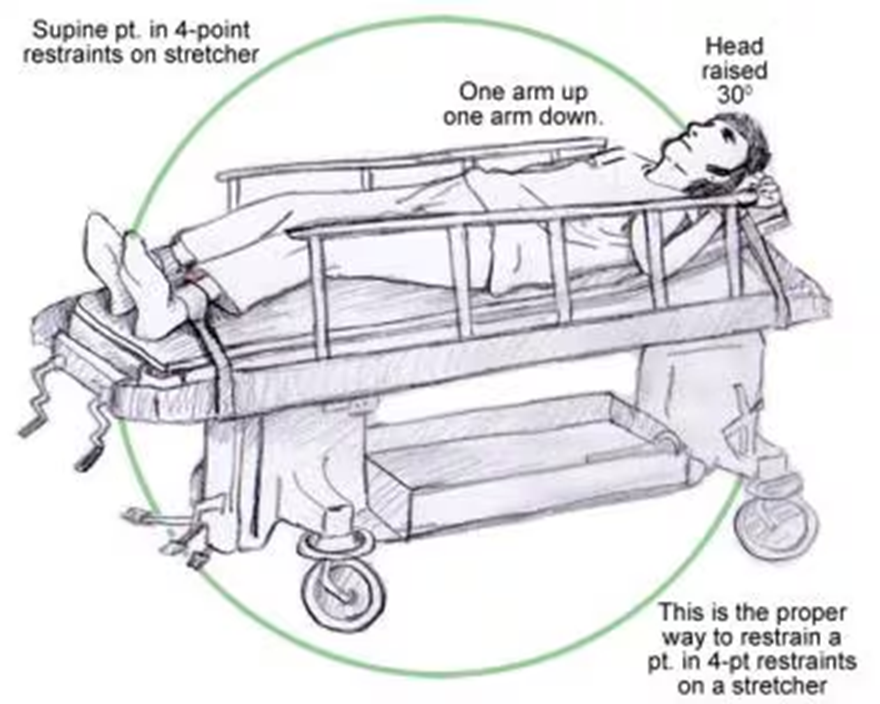A nurse is caring for a client.
The nurse is collecting data from the client 12 hr. later. How should the nurse interpret the following findings?
For each potential finding, specify whether the finding is an indication of potential improvement or an indication of potential worsening condition.
Vital signs
Mucous membranes
Vision
Lithium level
Urine output
The Correct Answer is {"A":{"answers":"B"},"B":{"answers":"B"},"C":{"answers":"B"},"D":{"answers":"A"},"E":{"answers":"A"}}
Choice A: Vital Signs The client’s vital signs show a decrease in temperature, respiratory rate, pulse rate, and blood pressure. This could indicate a potential worsening condition as the drop in blood pressure and pulse rate could suggest dehydration or shock, especially given the client’s history of water toxicity.
Choice B: Mucous Membranes The client’s mucous membranes are pale and dry. This could be a sign of dehydration, which would indicate a potentially worsening condition.
Choice C: Vision The client reports blurred vision. This could be a symptom of various conditions, including side effects of medications, glaucoma, or neurological disorders, indicating a potential worsening condition.
Choice D: Lithium Level The client’s lithium level decreased from 1.8 mEq/L to 1.2 mEq/L. This could indicate an improvement as the lithium level is now within the normal range (less than 1.5 mEq/L). However, it’s important to monitor the client’s symptoms as lithium is used to treat bipolar disorder.
Choice E: Urine Output The client’s urine output is 40 mL/hr. This is within the normal range for adults, indicating a potential improvement. However, it’s important to monitor this closely as changes in urine output can be a sign of kidney problems.
Nursing Test Bank
Naxlex Comprehensive Predictor Exams
Related Questions
Correct Answer is A
Explanation
Choice A Reason: Document the client's behavior in the medical record every 1 hour.
This statement is correct. When a client is placed in restraints, it is crucial to monitor and document their behavior and condition regularly. According to guidelines, the client's behavior, physical condition, and the need for continued restraint should be documented at least every hour. This documentation helps ensure the client's safety and provides a record of the care provided, which is essential for legal and medical purposes.
Choice B Reason: Provide range of motion exercises to all extremities every 2 hours.
This statement is also correct. Clients in restraints should receive range of motion exercises to prevent complications such as muscle atrophy, joint stiffness, and circulation problems. These exercises should be performed at least every 2 hours to maintain the client's physical health and comfort. However, this action alone does not address the comprehensive monitoring required for a client in restraints.
Choice C Reason: Keep staff interactions with the client to a minimum.
This statement is incorrect. While it is important to avoid overstimulating or agitating the client, minimizing staff interactions is not advisable. Regular interactions are necessary to assess the client's condition, provide care, and ensure their safety. Staff should engage with the client in a calm and supportive manner, ensuring that the client feels monitored and cared for.
Choice D Reason: Request the provider renew the prescription in 24 hours.
This statement is incorrect. Restraint orders must be reviewed and renewed more frequently than every 24 hours. Typically, the provider must evaluate the need for continued restraint within a shorter timeframe, such as every 4 hours for adults. This frequent review ensures that restraints are used only as long as absolutely necessary and that the client's condition is regularly reassessed.

Correct Answer is D
Explanation
Choice A reason:
Placing a client in restraints is a restrictive intervention that should be used only as a last resort when all other less invasive options have been exhausted. Restraints can increase agitation and have potential physical and psychological harm. The use of restraints must comply with institutional policies and legal regulations, which often require that less restrictive measures be attempted first.
Choice B reason:
Haloperidol is an antipsychotic medication used to treat acute psychosis and severe agitation. However, it is associated with side effects such as extrapyramidal symptoms and QT prolongation, which can lead to serious cardiac events. Medication should not be the first-line intervention for agitation unless the client poses an immediate threat to themselves or others, and non-pharmacological measures have failed.
Choice C reason:
Seclusion is another restrictive intervention that involves placing a client in a specially designed room to manage behavioral disturbances. It is used to ensure safety when a client is extremely violent or agitated. However, evidence suggests that seclusion does not provide long-term benefits in treating symptoms or reducing aggression and can be a negative experience for the client. It should not be the first intervention used.
Choice D reason:
Verbal de-escalation is the process of using calm language, listening skills, and empathy to help a client gain control of their behavior. It is a non-restrictive, first-line intervention that can prevent the situation from escalating. Techniques include communicating effectively, offering clear explanations, and providing realistic options. This approach helps maintain safety and supports the therapeutic relationship between the nurse and the client.
Whether you are a student looking to ace your exams or a practicing nurse seeking to enhance your expertise , our nursing education contents will empower you with the confidence and competence to make a difference in the lives of patients and become a respected leader in the healthcare field.
Visit Naxlex, invest in your future and unlock endless possibilities with our unparalleled nursing education contents today
Report Wrong Answer on the Current Question
Do you disagree with the answer? If yes, what is your expected answer? Explain.
Kindly be descriptive with the issue you are facing.
